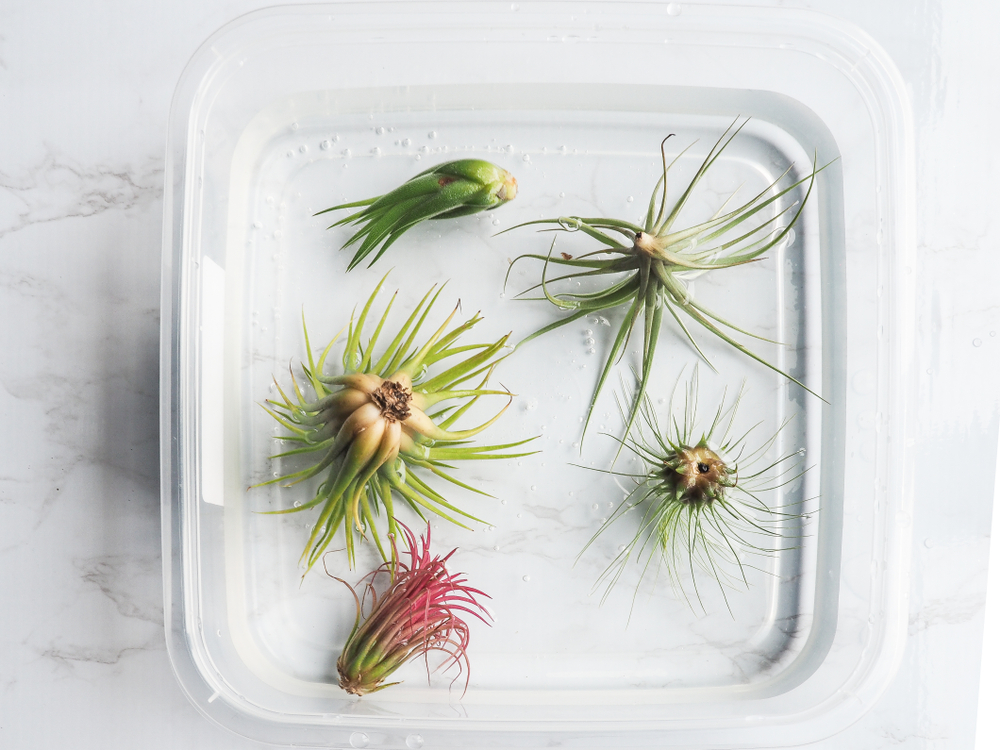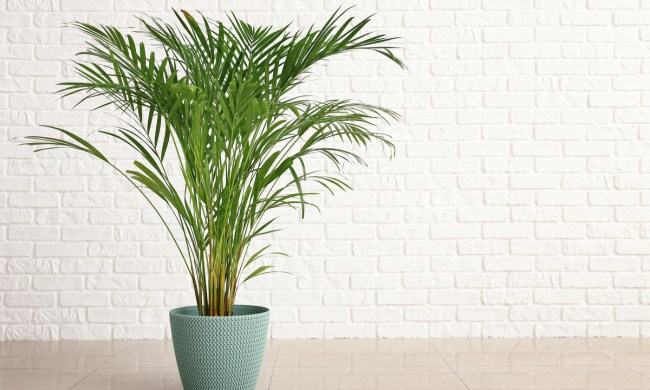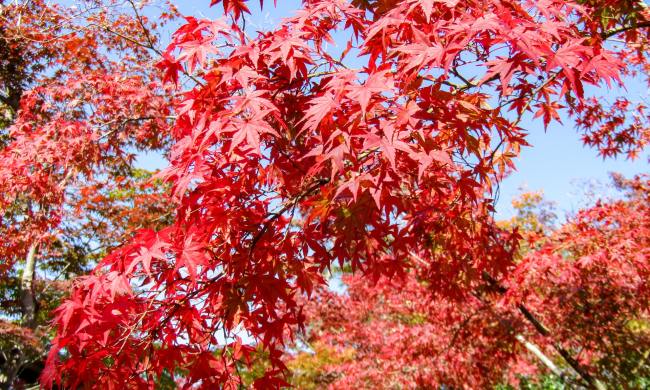You might have seen air plants at your local plant shop and wondered what they were, and you might have even thought they were faux foliage. What kind of plant can live without soil, anyway? But you’ve probably seen them enough times on your Instagram feed that you might wonder if you’re missing out. Air plants are trendy and unique plants that shouldn’t be ignored. Ahead, we’re going to talk about why you need an air plant and discuss our favorite varieties.
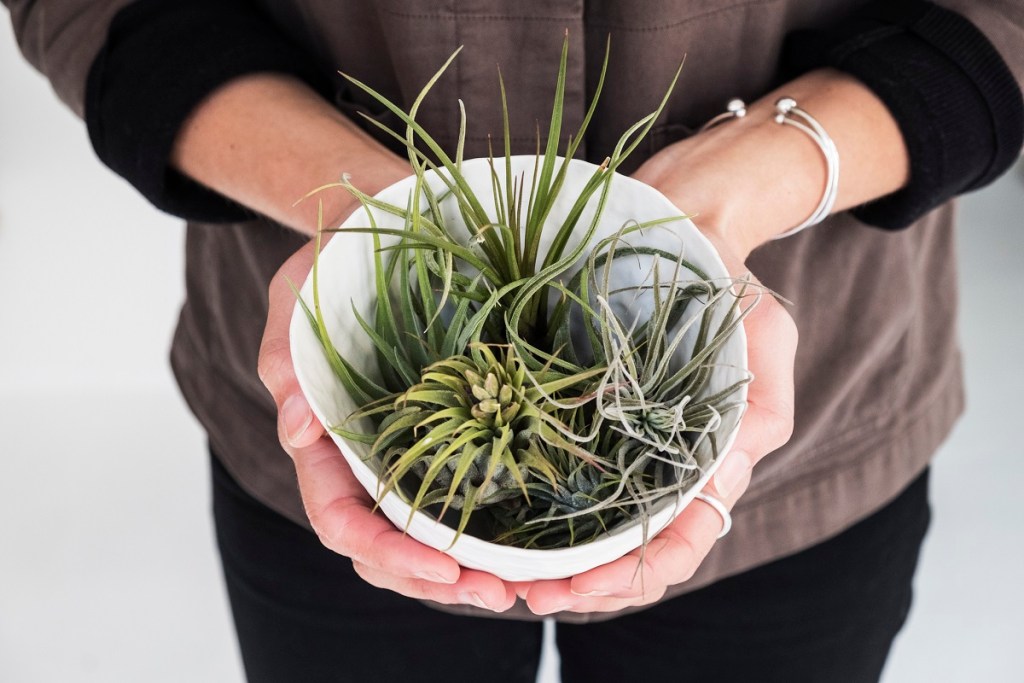
Why you need an air plant
Air plants, or Tillandsia, are lovely little plants that rarely get bigger than 8 to 12 inches. These tiny plants are low maintenance, need no soil, and are easy to care for as beginner plant parents. Plus, air plants are resilient, pet friendly, and have long life spans! The tiny or microscopic hairs on their leaves are used to suck up water from the air and capture harmful chemicals and toxins, making them genuinely air-purifying indoor plants.
Not only are they healthy additions to your home, but they’re also aesthetically pleasing and easy to implement into decor. Since they don’t need soil, you can use unique methods of displaying them around your home or office. Additionally, with their increase in popularity, they’re relatively easy to find!
How to water an air plant
While air plants do use the hairs on their leaves to absorb water from the air, they still need to be watered. However, this will look different than your traditional soil-living plants. There are a few ways to water air plants. First, you can use the soaking method to fill a bowl or sink with water and allow the plants to soak for about 20 to 30 minutes. After their soak, gently shake them out, and put them back in their display spot.
The second method is the rinsing method. Take your air plants, and under a gentle flow of water, rinse them off. Do not shake the plant with this method, as you’ll want the plant to have an opportunity to soak in the water droplets that are left behind after rinsing.
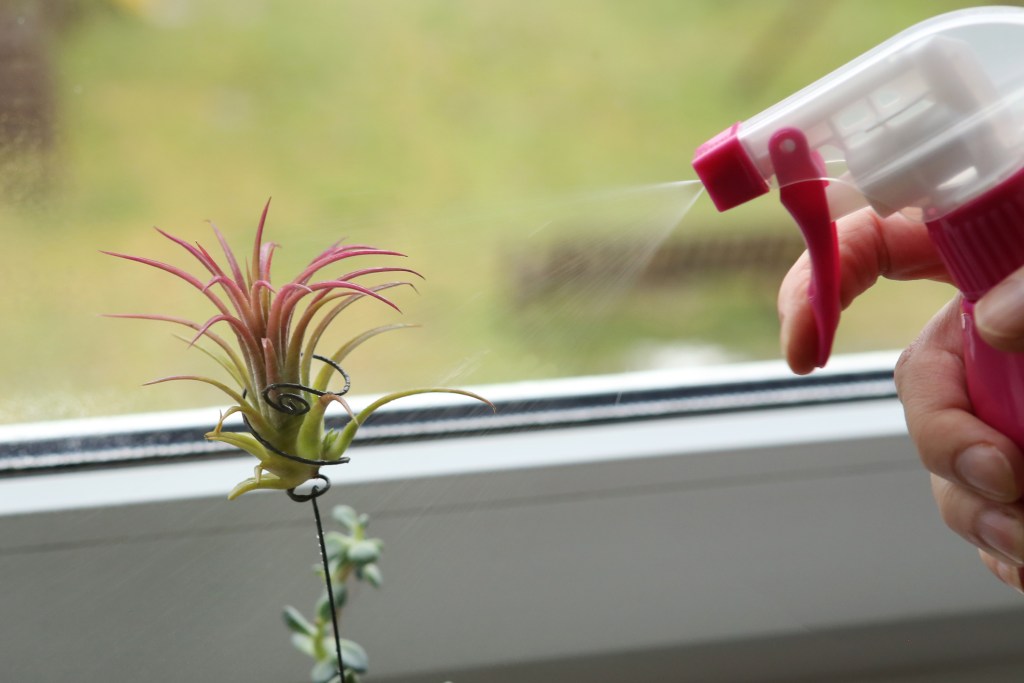
1. Sky plant
The sky plant, or Tillandsia ionantha, is one of the most popular air plants found in stores and homes. They grow to be 6 to 12 inches big and are not easy to kill. If you’re just starting with air plants and their special care intimidates you, sky plants are probably the best place to start. They need bright but indirect light and infrequent watering. Sky plants have silvery-green leaves that darken to a shade of red or pink towards their ends as they prepare to bloom. Under the right conditions, these plants will produce violet flowers.
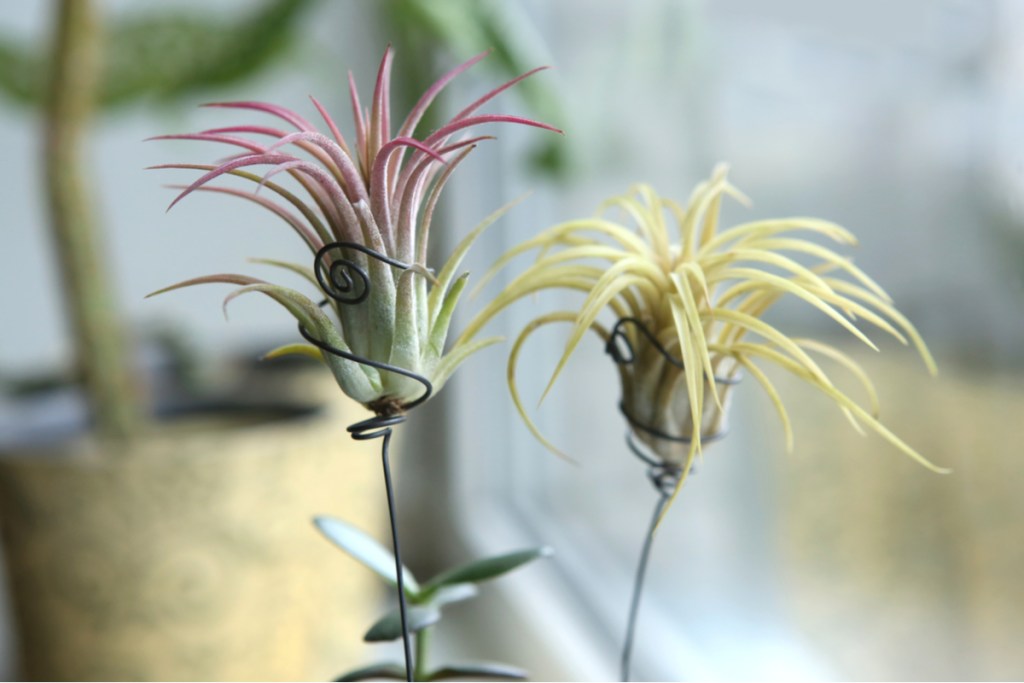
2. Druid sky plant
If you love the looks of a sky plant, but you’d like something smaller to start with, you should check out the Druid sky plant, otherwise known as Tillandsia ionantha, or “Druid.” These air plants are tiny, only growing between two and four inches big. The tips of their silvery green leaves turn more peachy than red, and their flowers are white. They also need bright, but indirect sunlight and only require watering occasionally.
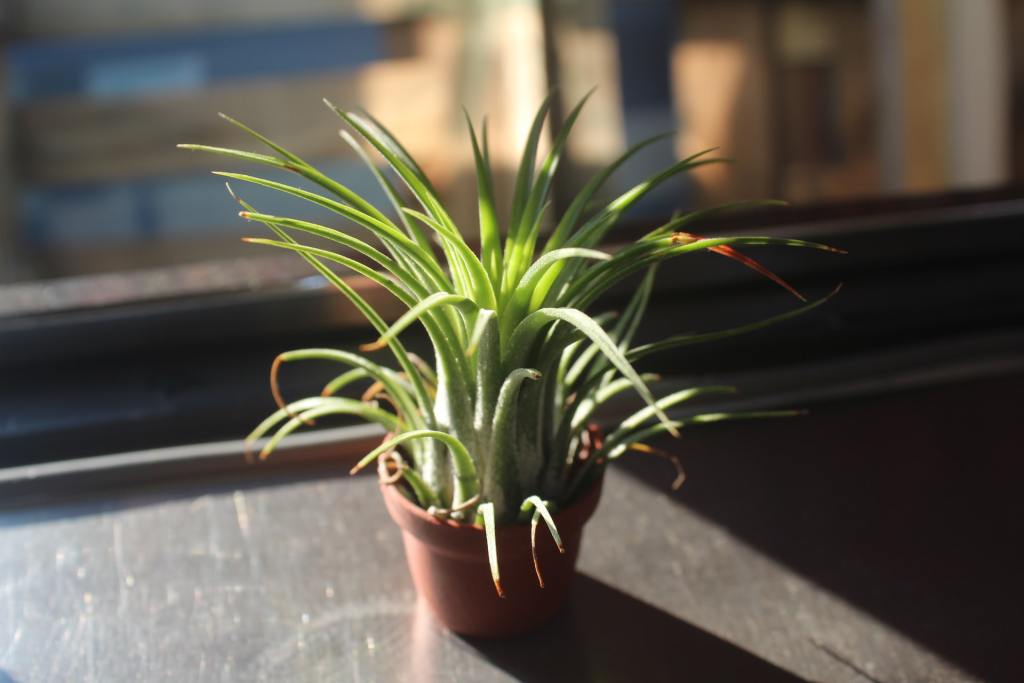
3. Maxima sky plant
If the druid plant is cute, but you want a more substantial air plant, you’ll probably like the Maxima sky plant or Tillandsia ionantha ‘Huamelula.’ The Maxima can handle more sun than other sky plants and ranges from five to six inches. They prefer full sun but can survive in partial shade. Maxima can even be grown under a grow light if your space doesn’t provide enough light. The leaves turn a bright red right before blooming, and the flowers are a fluorescent purple. It produces more than one bloom at a time under the right conditions.
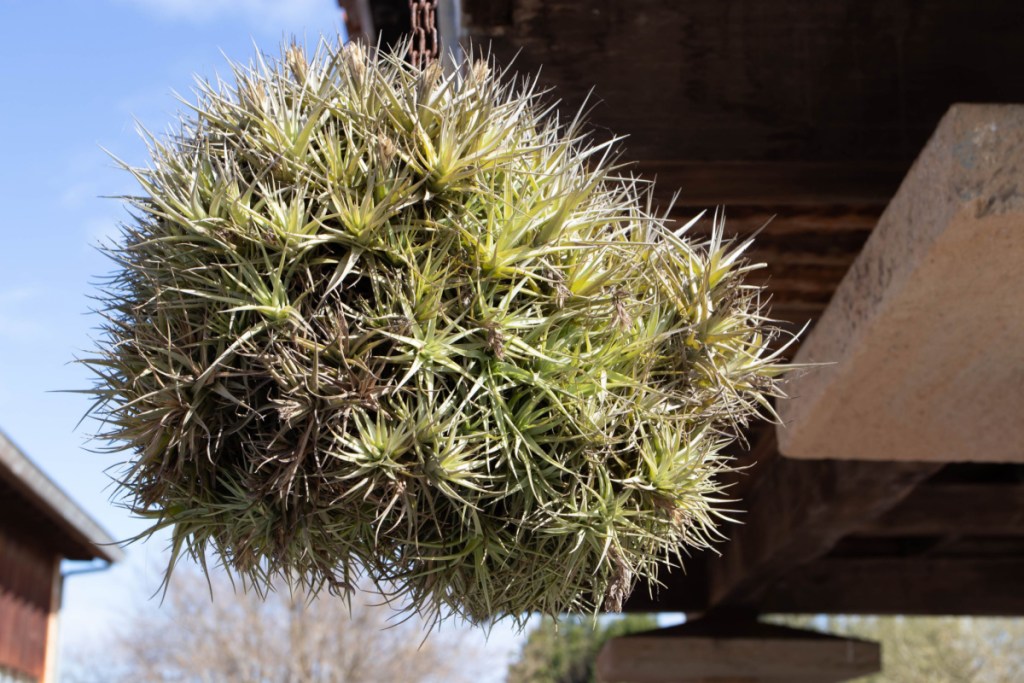
4. Mad pupper
The Tillandsia aeranthos bergeri is a cute plant and has an adorable nickname: Mad pupper! Its bright green leaves are slender and will bloom more reliably than other air plants on this list. The flowers are vibrant pink or blue, and the plant can grow between six to 10 inches in size. To flourish and produce those blooms, it will need bright but indirect light, but they have been known to thrive under grow lights as well.
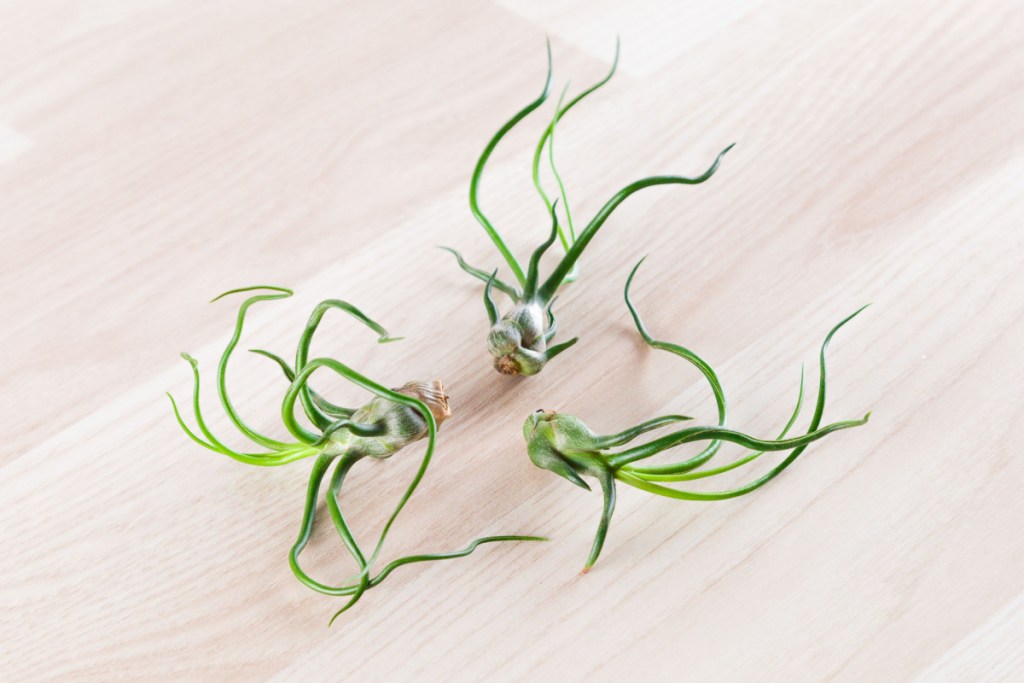
5. Bulbous air plant
The leaves of the bulbous air plant, or Tillandsia bulbosa, are narrow and contorted, giving them the appearance of tentacles. They grow between four to seven inches big and need bright but indirect light or partial shade to grow happily. They change from green to purple or red when it’s about to bloom, similar to other air plants. In the wild, bulbous air plants live symbiotically with ants. The hollow leaves are lovely homes for the ants, and the plant feeds off the ant waste left behind.
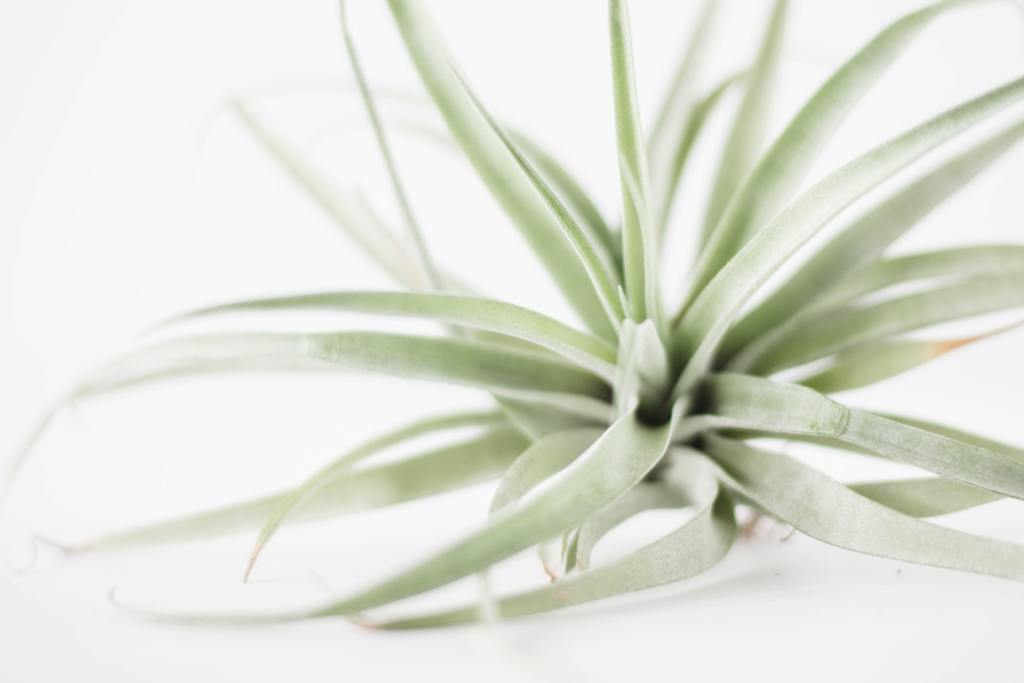
6. Peach air plant
The peach air plant is unique in color, as its name might suggest. Also known as Tillandsia capitata, these air plants are soft to the touch, and the leaves are silvery-green but change to a peachy-pink as they prepare to bloom. The flowers are purple and contrast nicely against the peachy-colored leaves. They grow between two and eight inches big and prefer bright indirect light but can tolerate full sun.
Air plants are a unique and fun species of plants that we don’t think you should miss out on. So if you’re looking for an easy-to-care-for plant that can easily fit into your decor, air plants are the way to go.
